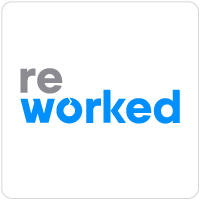How Google, Facebook and Apple Create Unparalleled Employee Experiences
When it comes to the war on talent, it’s no surprise that tech giants like Google, Apple and Facebook consistently grace “Best Place to Work” lists. Through a combination of culture, shared values and an emphasis on employee experience, these companies have managed to keep employees productive and satisfied.
The Problem with Feedback Surveys
Annual employee satisfaction surveys have become commonplace in many organizations—but the value of the responses leaves something to be desired. “Some thought leaders in human resources (HR) have begun questioning the annual survey’s accuracy and usefulness,” writes Steffan Maier, co-founder of Impraise. In fact, a study by Impact Achievement Group and HRmarketer found some surprising results about workplace surveys:
- Inaccurate data: 48% of all respondents did not believe employee surveys provide an honest and accurate assessment.
- Different perspectives: 52% of senior-level respondents felt the surveys provided a very accurate employee assessment, yet 52% of all other respondents said the survey data they received was not or only somewhat accurate.
- Distorted reality: Most employees who take the time to respond fall into two categories—very displeased or very satisfied—with the very displeased group far more likely to respond than any other.
- Lack of change: 58% of respondents agreed that results did not—or only slightly—helped managers gain a better understanding of what behaviors or practices they could change to improve.
Google’s Scientific Method
Not surprisingly, Google’s employee surveys are a highly analytical affair. Their People Operations team (also known as Human Resources) uses feedback data to optimize processes and align with company culture. By using people analytics, Google has been able to improve their workplace in a number of ways. For example, Google’s HR analytics revealed in 2007 that a top reason for employee departures was due to new mothers choosing to quit. To combat this, Google increased fully-paid maternity leave from 12 weeks to five months—reducing the attrition rate by half.
People analytics have also helped improve organization-wide teamwork and leadership. By comparing human experience with qualitative measurements, Google has been able to identify the characteristics of good managers, as well as how to create a positive work environment.
The result? Google employees feel empowered to create change within the organization—leading to a survey participation rate of 90 percent.
Courting Candidates Like Customers at Facebook
Like Google, Facebook also utilizes feedback data—with added emphasis on new hires. Every candidate is treated like a customer, so that the experience is positive from recruitment to potential hire. After meeting the teams, candidates are asked for feedback on the interview process. Data collected is then compared against feedback from other tenured employees. It’s a calculated move—and one that ensures that even before being hired, a candidate understands the value of their opinion and forms a positive impression of what it’s like to work for the company.
According to Candidate Experience Lead Willie Henry, Facebook’s continued recognition as one of Glassdoor’s Best Places to Work is attributed to three key points:
- Company culture that values the contributions and experiences of every individual
- Bi-annual pulse surveys to maximize employee potential and strengths
- The ability for employees to take pride in their work and know their impact
Adhering to these core values helps provide a foundation for Facebook’s employee satisfaction surveys. Using that feedback, the company can identify gaps where employees are missing vital support during different parts of the employee life cycle.
At Apple, It Pays to Treat Everyone Like an Executive
Apple has found success in viewing employees not as customers, but as executives. After joining the company in 2014, retail chief Angela Ahrendts made it a point to build morale by recognizing the importance of retail staff. In an interview with Fast Company, Arhrendts explains that keeping employees happy starts with respect.
“I don’t see them as retail employees,” Ahrendts said. “I see them as executives in the company who are touching the customers with the products that Jony [Ive] and the team took years to build. Somebody has to deliver it to the customer in a wonderful way.”
By focusing on people rather than products, Apple employees can deliver a naturally friendly and engaging customer experience. Maintaining this relaxed atmosphere has helped increase Apple’s retention rate—and consistently kept Apple at the top of retail experiences.
Ultimately, businesses can take a few cues from these Silicon Valley superstars. Employee experience is more than unique perks and workplace environments—it’s the people-first ethos that keeps employees coming back. Measuring employee experience takes a little more than results from an annual satisfaction survey. Feedback should be asked for early and often—and turned into actionable insights so that employees know their opinions are valued and heard.

